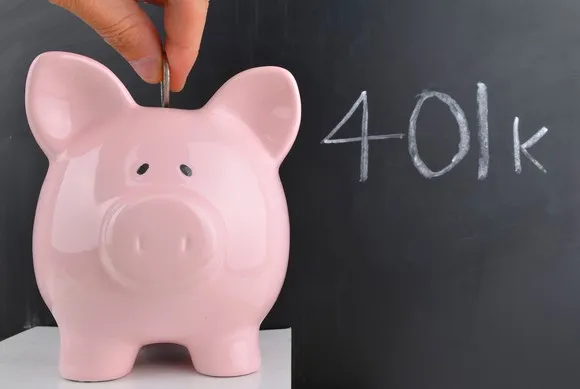Don’t understand your 401(k)? You’re not alone, survey shows.
A new survey explores an odd subgroup of American employees: Workers who aren’t enrolled in a 401(k), but who think they are.
In a Retirement Security Survey, released this month, Principal Financial Group found that nearly 6 in 10 nonsavers, 59%, wrongly believed they were contributing to a 401(k) retirement plan.
The survey of nonsavers reached 1,110 workers of various ages, races and incomes, linked by a common trait: None of them participated in a 401(k) offered by their employer.

They thought they were contributing to a 401(k). They were not.
Asked how much they were saving, most of the nonsavers gave surprisingly specific figures: They were setting aside 5%, or 8%, or 10% of their income in a 401(k). Some workers said they were saving more than that.
Not surprisingly, the finding suggests that some of those workers will have a hard time reaching their retirement savings goals.
Retirement experts say the survey also points to a need for employers to communicate more clearly with employees about retirement savings.
“We have a very complex system,” said Chris Littlefield, president of retirement and income solutions at Principal Financial. “People change jobs, and every plan at every employer is different.”
Barely half of American households have retirement accounts, according to the 2022 federal Survey of Consumer Finances.
Wealthier Americans are much more likely to participate in retirement plans. And the wealthy reap most of the benefits from a program that offers a tax loophole on retirement savings.
Is the government coming for my 401(k)?Some economists say accounts aren't worth it

Most employees enroll in a 401(k) when given the option
Research has shown, however, that workers do a pretty good job of saving for retirement when an employer puts a 401(k) within reach.
Roughly 80% of employees enroll in a 401(k) when given the option, according to Anqi Chen, a senior research economist at the Center for Retirement Research at Boston College.
The new survey from Principal Financial, the nation’s third-largest 401(k) administrator, started as a quest to learn why some workers chose not to participate in retirement plans.
And then, the survey takers collected some odd responses.
“We were asking questions like, ‘Why are you not participating?’ And we got the answer back, ‘We are participating,’” Littlefield said.
The survey then targeted nonsavers, specifically asking if they were participating in their company’s 401(k). Of that group, roughly half wrongly believed they had been automatically enrolled in a 401(k). Two-fifths thought they had signed themselves up.
Why were the workers so confused? Survey researchers hatched some theories.
Many workers had been enrolled in 401(k) plans in previous jobs. Some of them, perhaps, simply forgot to sign up for a new plan when they changed jobs. Some workers had been automatically enrolled in a 401(k) at a prior job. Maybe they assumed they would be auto-enrolled at the new one.

'I have no clue what I'm doing'
The survey solicited comments from employees. The comments revealed confusion.
“I have no clue what I’m doing with any of the retirement stuff,” one Gen-Z male confided.
“It wasn’t explained to me,” another said.
A Gen-X woman said, “I truly have no idea how to even begin investing.”

How can employers clear up the 401(k) confusion?
Employers looking to make retirement plans less confusing could consider automatic enrollment, leaving it to the worker to opt out.
Vanguard, the investment management company, found that workers with auto-enrollment 401(k) plans participated at a rate of 93% in 2022, compared with 70% enrollment in voluntary plans.
“It still gives people the same two options: You’re in a plan, or you’re not,” Chen said. “It just helps people to get started saving.”
Starting in 2025, most new 401(k) plans must automatically enroll employees. The mandate is part of the SECURE Act 2.0, which passed in 2022.
Employers could clear up some of the confusion around 401(k) participation, experts said, simply by telling employees whether they are participating.
“It sounds like a communication issue, from employers to the employee,” said Kai Walker, managing director of retirement research and insights at Bank of America.
Companies with 401(k) plans should wage an “ongoing campaign,” Walker said, sending personalized messages to employees, telling them if they are enrolled and how much they are contributing.
Employers could go even further, sending regular reminders to workers who are not saving for retirement, and encouraging 401(k) participants to save 10% or more of their income.
Employees can help their own retirement-savings cause by educating themselves on their company’s 401(k) plan.
One problem with digital finance is that workers don’t often see a breakdown of their pay. The humble paystub, a detailed tabulation of salary and deductions, no longer comes in the mail to most of us.
“It should be really simple for people to check their paychecks,” Littlefield said. “But people don’t check their paychecks anymore.”
One way to know if you are saving for retirement is to check your annual W-2 form: 401(k) deductions are listed in Box 12.
Or, pick up the phone and call HR.
“If you're unsure about whether or not you're contributing for retirement, double-check with your employer,” said Sophoan Prak, a financial adviser at Vanguard. “Remember, it's better to contribute something, even if it's a small amount.”
Disclaimer: The copyright of this article belongs to the original author. Reposting this article is solely for the purpose of information dissemination and does not constitute any investment advice. If there is any infringement, please contact us immediately. We will make corrections or deletions as necessary. Thank you.







